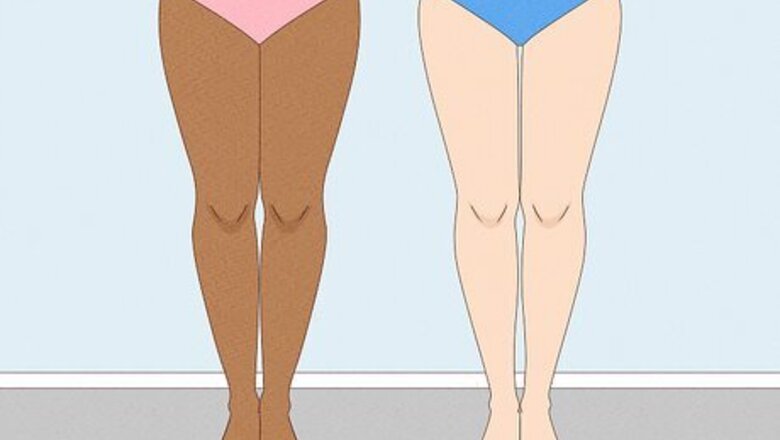
views
The Different Types of Leg Shapes
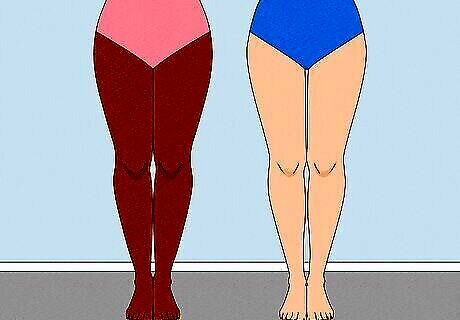
Normal “Normal” legs simply refer to legs that don’t have any abnormal curvature. In other words, the thigh, knee, and shin bones are stacked straight on top of each other. When standing up straight with the feet pressed together, the knees, calves, and ankles touch at at least one point. It’s normal for there to be gaps of space between the thighs and calves when standing and pressing the legs together. How much space is visible largely depends on the fat distribution and musculature of your legs. Meet the wikiHow Experts Tamika Tucker is a fitness and lifestyle coach and bodybuilder. Brendon Rearick is a personal trainer, strength coach, and co-founder of Certified Functional Strength Coach (CSFC). He has over 17 years of experience in the fitness industry. Danny Gordon is a certified personal trainer with over 20 years of experience in the industry. Melody Sayers, MS, RD, NASM-CPT is a registered dietician, NASM personal trainer, and owner of Elevate Your Plate® with over 8 years of experience. Daniel Barrett, MD is a board-certified plastic surgeon and owner of Barrett Plastic Surgery with over 6 years of surgical experience. He specializes in aesthetic and reconstructive surgery of the face, nose, and body.
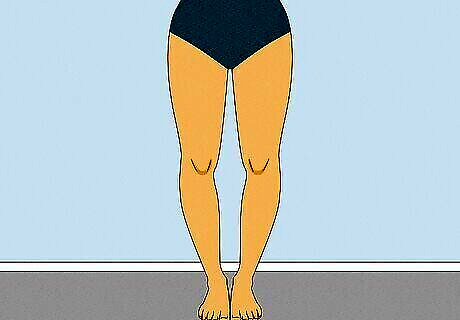
Bowlegged Bowlegs, also known as O-shaped legs or genu varum, is a leg condition where the legs curve outward. When standing up straight with the feet pressed together, the knees do not touch, and the calves bow outward. Babies are born with bowlegs, which typically go away when they’re around 18 months old. However, they can persist in older children and adults. Bowlegs can be caused by some conditions that affect children, like Blount’s Disease and Rickets. Bone fractures can sometimes cause bowlegs, too. Bowlegs aren’t generally considered a serious condition that needs to be fixed, as they don’t typically cause mobility issues or pain. In more severe cases, bowlegs can cause leg and knee pain or lead to arthritis in the leg or knees.
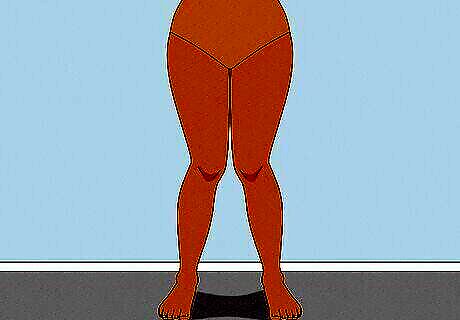
Knock-kneed Knock-knees, also called X-shaped legs or genu valgum, is a leg condition where the knees curve inward. When standing straight and pressing the legs together, the knees touch, but the ankles do not. Most children are a bit knock-kneed, as it’s a part of normal bone development. While it typically goes away when children are 7 to 8 years old, it can persist into adulthood for some people. Knock-knees can be caused by some conditions, like arthritis and bone infection (osteomyelitis). It can also develop from a knee or leg injury. Knock-knees aren’t typically treated as a serious condition, as they don’t usually cause mobility issues or pain. However, if the knock-knees are severe and left untreated, they can lead to arthritis in the knees, pain, or difficulty walking.
What causes leg shape?
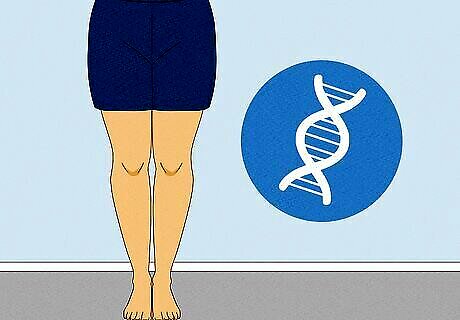
Your leg shape is mostly determined by your genetics. The shape of your legs is mostly caused by the shape and position of your bones, including your pelvis, thigh, and shin bones, which are determined by your genetics. Your natural muscle tone and fat distribution (which are also mostly influenced by your DNA) also affect the shape of your legs, says fitness and lifestyle coach and bodybuilder Tamika Tucker. Certain conditions and trauma to the legs can affect their shape, too. For instance, arthritis, obesity, bone infections, and injuries to the knees or shin bones can alter their shape.
Ways to Change Your Leg Shape
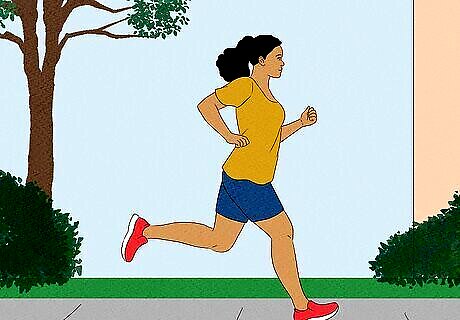
Cardio exercise can help get rid of excess fat and build leaner legs. Cardiovascular exercises burn calories, which can help you lose weight all over your body, including your legs. Tucker says people who do a lot of cardio training, specifically running, tend to have more slender legs. Personal trainer and strength coach Brendon Rearick adds that walking and hiking are two other great ways to slim down your legs. Note: You cannot spot reduce fat, says certified personal trainer Danny Gordon. Running, walking, and hiking can help you lose weight all over your body, not just your legs. Eating a balanced diet is equally important for helping you lose excess fat. Make sure you’re getting enough protein, whole grains, vegetables, fruits, and healthy fats.
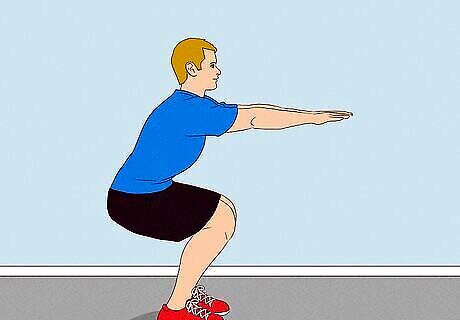
Strength training exercises can help build more muscular legs. If you want to build bigger, muscular-looking legs, Tucker says strength training is the way to go. Registered dietician and personal trainer Melody Sayers, MS, RD, NASM-CPT recommends doing exercises that work the entire lower body, including squats, lunges, deadlifts, calf raises, glute bridges, leg presses, and adductor and abductor movements. Sayers suggests doing 6 to 12 reps of each exercise using a moderately heavy weight to help grow your muscles. Ensure you’re getting plenty of protein to help build your muscles. The average person needs to eat 0.36 g of protein per pound they weigh (or, 0.8 g per kg).
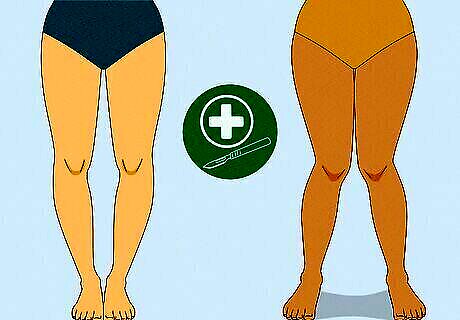
Bowlegs and knock-knees can be realigned with surgery. While prescription shoe inserts can help manage symptoms, the only way to treat bowlegs or knock-knees is through bone surgery (osteotomy). The surgery is intensive, so it’s typically only recommended if your condition is severe and your legs are causing you pain or making it difficult to move. During the surgery, a surgeon cuts and reshapes the knee or shin bone to fix the alignment issue. Then, they attach the bone to an external brace around your leg that keeps the bone straight while it heals. It can take at least 6 months for the bone to heal, and the procedure requires physical therapy to regain your strength.
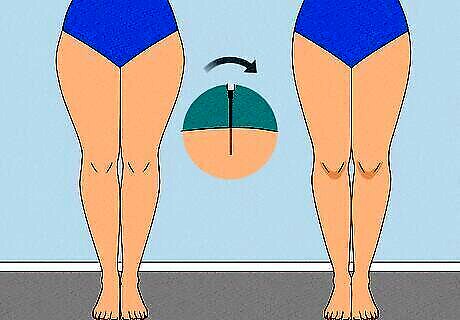
Cosmetic surgeries can help shape and define the legs. For example, liposuction can remove excess fat around the thighs and hips to give the legs a leaner shape. Plastic surgeons can also shape your thighs and calves with your own fat. They typically remove excess fat from other areas of your body, like your stomach, and inject it into your thighs and calves. If you have excess skin and fat around your thighs, a thigh lift can help slim and smooth them. Liposuction, fat grafting, and thigh lifts can come with risks, including infection, numbness, scarring, and leg asymmetry. Recovery time depends on the exact procedure, but it’s typically between 1 to 2 weeks. During this time, you may experience swelling and discomfort. If you’re considering liposuction, board-certified plastic surgeon Daniel Barrett, MD says it’s important that you maintain a stable, healthy weight. He clarifies that it only removes fat, so you may want to consider a different procedure if you also have excess skin to remove. To preserve your results, Dr. Barrett explains that it’s important to maintain a healthy lifestyle by eating a balanced diet and exercising. In his experience, “a low-carb diet and intermittent fasting have been the most successful ways that my patients have maintained their appearance and their results.”
Which leg shape is the most attractive?
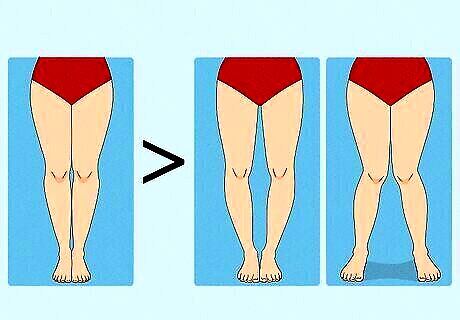
Straight, proportional legs are generally considered most attractive. For the most part, people find straighter legs without any abnormal curvature attractive. However, that’s not to say that slightly curved legs, bowed legs, or knock-knees aren’t beautiful. Many people find these leg shapes attractive, too. Remember, beauty is entirely subjective. What someone considers attractive is completely unique to them. Legs of all sizes are beautiful, too. People consider all kinds of legs attractive, including slender, thick, and muscular legs. Know that your leg shape isn’t something you need to fix, unless your legs or knees are causing you pain or making it difficult to move. Legs come in all different shapes and sizes, which simply adds to your unique beauty!










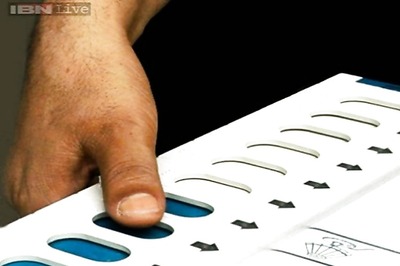






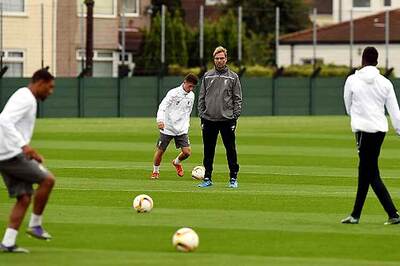


Comments
0 comment